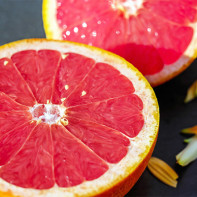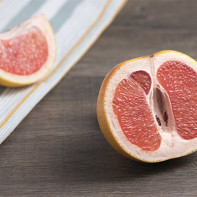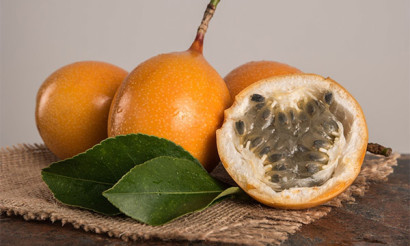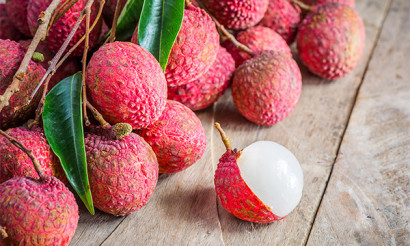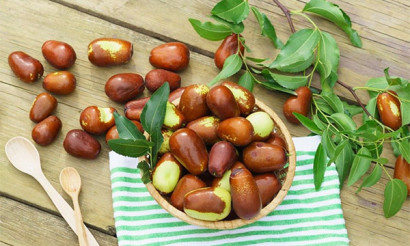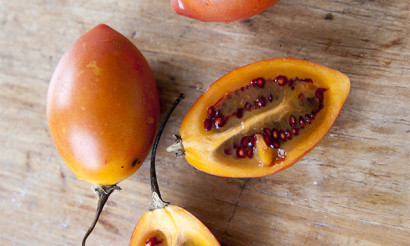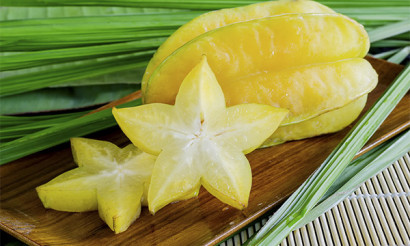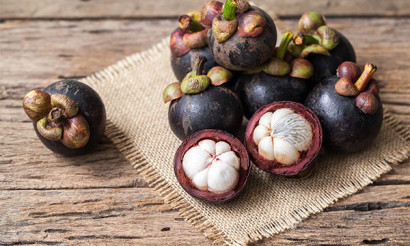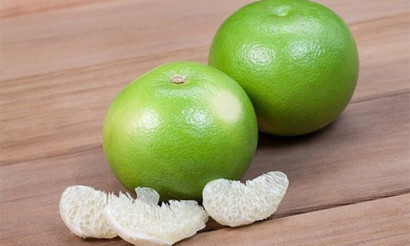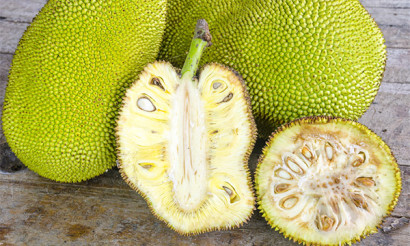Grapefruit: useful properties and contraindications
Grapefruit is the fruit of a tree belonging to the Citrus family. Its name itself is formed from two English words - with "fruit" everything is more or less clear, it is "fruit", but the prefix "grape" (translated as "grape") suggests that the fruit grows on the branches in clusters. In truth, grapefruit bears no other resemblance to grapes. It is much more similar to its citrus "congeners."
- The difference between grapefruit and pomelo
- What's healthier: grapefruit or pomelo?
- Composition and calories
- What is grapefruit good for?
- General benefits
- For Women
- For Men
- Pregnancy
- For breastfeeding
- For Children
- White or red grapefruit is healthier
- The Benefits of Grapefruit Peels
- The Benefits and Harms of Grapefruit Juice
- What is the usefulness of grapefruit seeds?
- Grapefruit Oil: Characteristics and Usage
- How to eat grapefruit to lose weight
- Grapefruit in medicine
- Diabetes Mellitus
- For pancreatitis
- For Gastritis
- For the Intestines
- For constipation
- For gout
- For the liver
- For hemorrhoids
- Pri cholecystitis
- Recipes of folk medicine based on grapefruit
- Compresses for venous insufficiency
- Grapefruit bath for colds
- For Gums
- For sore throat
- For maxillary sinusitis
- For tired eyes
- For Calluses
- Grapefruit in cosmetology
- For Face
- For Hair
- Hazards and contraindications
- What you can not eat grapefruit with
- How to choose and store the grapefruit
- How to Eat a Grapefruit
- How much you can eat a day
- Can I Eat at Night and on an empty stomach?
- How to Peel and Slice a Grapefruit
- Can I Eat the Peel
- Can I Eat a Grapefruit after a Workout?
- What to make with grapefruit: Recipes
- Juice
- Salad
- Smoothie
- Jam
- Compote
- Can I Give Grapefruit to Animals
- Interesting Facts about Grapefruit
What is the difference between grapefruit and pomelo?
Biologically speaking, the answer is simple: the grapefruit is a product of random (i.e. natural) crossbreeding of an orange and a pomelo. The grapefruit is much smaller than the pomelo, measuring only 10-20 cm in diameter, whereas its "ancestor" can have a diameter of 30 cm.

The grapefruit has a sour flesh, which may have a light pink, yellow or red color. It is divided into slices by white translucent films. Bones can be found inside these slices.
As for the pomelo, its skin is thicker, and the flesh is divided into slices by a thicker and tougher film. The color of the flesh can be either pale green or yellowish. Its taste is sweet and sour, with a bitterness, and the flesh contains less juice than grapefruit (and even than other citrus fruits). But the fruits of the pomelo are the largest - they can weigh up to 10 kilograms.
Which is healthier: grapefruit or pomelo?
This question is difficult to answer unequivocally. In terms of its vitamin C content, the pomelo has 1.5 times more vitamin C, so it is more suitable for strengthening the immune system. In addition, it contains more fiber, which helps to normalize digestion. There is a lot of potassium in the pomelo, which helps to remove excess fluid from the body and helps to improve cardiovascular function.
On the other hand, grapefruit contains more vitamin PP, which is necessary for normal carbohydrate and fat metabolism. It also normalizes blood glucose levels, and the organic acids in these fruits speed up metabolism. Also, grapefruit is high in magnesium, which prevents cramps and is good for the heart. So the pomelo may be better for your heart, but the grapefruit helps you lose weight.
Composition and calories
The energy value of grapefruit is relatively low - 35 kcal per 100 grams. But you need to understand that the fruit is quite large, and the caloric value of one grapefruit can already be 70-100 kcal.
The chemical composition of these fruits caused their unusual medicinal properties. It includes:
- Various sugars - up to 7%.
- Organic acids, including citric acid - up to 3%.
- Essential oil, itself rich in useful substances. It is found both in the pulp of the fruit, and in its peel.
- Ascorbic acid (vitamin C). Half a grapefruit of average size contains a daily norm of this substance. It is difficult to overestimate the importance of this vitamin. It is a substance necessary for the normal process of hematopoiesis and tissue repair, it also ensures the immune system and contributes to the normalization of digestive processes.
- B vitamins, including riboflavin, which, in addition to giving the pulp a reddish-yellow hue, improves vision and enhances brain function.
- A large number of macro- and micronutrients, including iron, which prevents anemia, potassium, which is good for the heart, phosphorus, which speeds up metabolism, and zinc with its anti-inflammatory properties.
- Pectin substances that normalize digestion.
- Naringin glycoside, which gives the fruit a bitter taste.
Grapefruit also contains phytoncides, which are substances that are often called natural antibiotics. Indeed, they effectively inhibit the development of most pathogens.
Also, the substances in the grapefruit, normalize the level of "bad" cholesterol in the blood (it is almost impossible to get rid of it completely, and yet it is he who causes strokes).
What is useful for grapefruit
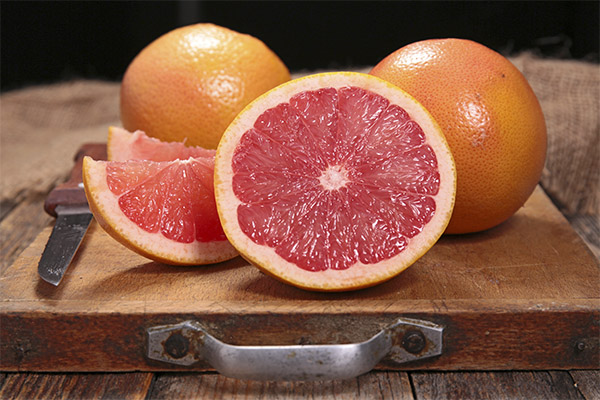
General benefits
Grapefruit is a fruit that is useful for both children and adults. It is recommended to include it in the diet:
- for coronary heart disease and circulatory pathologies;
- Skin diseases to reduce inflammation and healing of the skin;
- Gum disease;
- To prevent the formation of cholesterol plaques and the development of atherosclerosis;
- normalization of liver function;
- to remove swelling (regardless of the reason for the accumulation of excess fluid);
- As a prophylactic against anemia.
In addition, both the fruit itself, and the juice is recommended to people recovering from long-term infectious diseases.
For women
For women, grapefruit is useful because it contains substances that stabilize hormone levels. In practice, this means that the regular use of this fruit helps to normalize the menstrual cycle, alleviates the condition during the "critical days", helps relieve lower back pain and abdominal pain during PMS.
Also grapefruits are very useful during menopause, because they allow to reduce the complications that accompany this process. The substances contained in the fruit reduce the severity of hot flashes.
For men
For the stronger sex, grapefruit is useful because it contains a lot of antioxidants, lycopene and zinc. These substances have anti-inflammatory properties, which helps prevent the development of prostatitis, the more so because this fruit contains compounds that are considered natural antibiotics.
Also grapefruit is important because it allows you to reduce the level of "bad" cholesterol, a problem that men face more often than women.
Grapefruit zest, especially when combined with additives such as chocolate and cinnamon, is a mild aphrodisiac and helps combat erectile dysfunction.
In Pregnancy.
Grapefruit is useful for expectant mothers because it is a treasure trove of vitamins. It helps to get rid of edema, and is an excellent prevention of obesity. It is worth to include grapefruit in the diet to get rid of such unpleasant complications of pregnancy, such as fatigue, loss of concentration, etc.
At the same time, studies have not identified contraindications for the consumption of grapefruit during pregnancy. But there is evidence that in large quantities it can affect estrogen levels, so you need to observe moderation - half a fruit a day will be enough, especially since it is a highly allergenic product.
When breastfeeding
In the postpartum period, grapefruit can be useful in that it will normalize weight, stabilize hormonal background, improve the condition of hair, skin and nails. Moreover, it is considered an excellent remedy for postpartum depression.
But you need to be careful because the product is highly allergenic. This means that in the first two months it should be completely excluded from the diet, then you can try to introduce it, but start with a very small amount. Only after checking the child's reaction and making sure that everything is okay, you can eat half a grapefruit from time to time.
For Kids
This fruit can be very useful for children, as it allows you to fully cover the growing body's need for vitamin C and other macro- and micronutrients. Grapefruit helps to stimulate the digestive organs (in children this system develops quite slowly and often needs help). Also, this fruit is useful because it promotes the development of the brain and the central nervous system in general. Finally, the use of grapefruit strengthens the immune system, which is especially important in the cold season.
But we must remember that the use of grapefruit can cause the same severe allergies as the inclusion in the diet of oranges. So a child under the age of three years should not give them at all. After this introduction to the fruit gradually, starting with 2-3 drops of juice, and then gradually increasing the amount to several slices.
Which grapefruit is more useful: white or red
The usefulness of grapefruit largely depends on its variety. In general, there are about twenty of them, but it is easy to navigate through them, because they are divided into two groups - white and red. The former contain more fiber, so they are more useful for treating constipation. The red ones contain more antioxidants and lycopene and are used in the treatment of inflammatory diseases and cancer.
The benefits of grapefruit rinds
Grapefruit zest is useful because it contains all the same vitamins as in the pulp itself, as well as essential oil and phytoncides that have antibacterial properties. But you can use it as food or medicine only if you can be sure that the fruit has not been treated with agricultural chemicals. Then grapefruit zest can be crushed, dried, and then added to baked goods or tea to get a delicious and healthy drink that boosts the immune system and improves digestion.
Benefits and harms of grapefruit juice
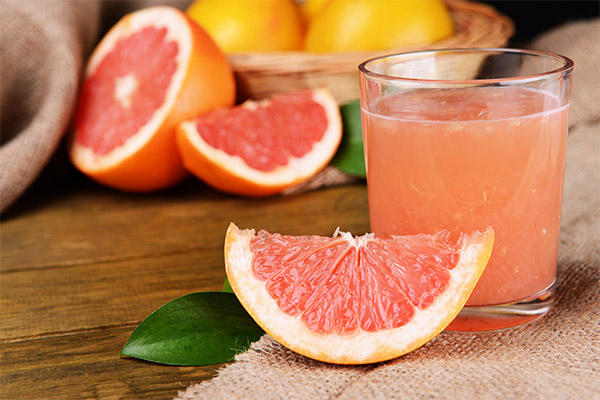
Grapefruit juice contains all the same substances as its pulp, only in a more concentrated form. Because of this, grapefruit juice speeds up the metabolism, normalizes digestion and strengthens the immune system. However, the higher concentration of all of the above compounds, including acids, is also due to its harm - for example, it is an increased production of gastric juice, due to which the product is contraindicated in diseases of the gastrointestinal tract. It also contains substances that reduce the effectiveness of some medicines, which will be discussed below.
What are the benefits of grapefruit seeds
Depending on the variety, each grapefruit kernel contains 5-12 white grapefruit seeds that have a bitter taste due to their high glycoside content. Since these are the seeds that propagate these plants, they have a natural antibacterial protection. Pips contain a whole complex of biologically active substances. These include quercetin (one of the flavonoids, which has anti-inflammatory properties), and rutinosides, and various vitamins. They cannot be consumed as food, but they are used to make an extract that is widely used in both official and folk medicine because it has disinfectant, antifungal and antimicrobial properties.
As a rule, the extract is used as an external remedy. It has no contraindications and combines well with other medicines.
Grapefruit oil: properties and uses
In addition to minerals and vitamins, this oil also contains substances that make up its subtle aromatic composition and at the same time have therapeutic properties. For example, it contains geraniol, which has antibacterial properties and helps regulate blood pressure, and myrcene, which has similar properties.
In aromatherapy, grapefruit oil is used to relieve headaches and tension, to improve vision, as a cold remedy, and in cosmetology - to combat cellulite.
How to eat grapefruit for weight loss
Grapefruit contains a substance called naringin. On the one hand, it gives it a bitter taste, on the other hand - it helps to digest food faster and prevents the accumulation of fat - on the contrary, the body uses up their much faster. Grapefruit also contains inositol, which belongs to the category of vitamins and at the same time has the properties of a natural fat burner. Finally, we should not forget about antioxidants, which also help burn fat and normalize sugar levels, and they also remove excess fluid from the body.
It is not necessary to sit on a grapefruit diet to be convinced of the effectiveness of such a chemical composition. It is enough to give up fatty and fried foods and eat half a grapefruit before meals or drink a glass of fresh juice from this fruit. And then you can get rid of 3-4 kilograms of extra weight in a month.
If the result is needed urgently, then you should try the express diet. It involves a fairly modest diet. For breakfast you can eat toast, half a grapefruit and one egg with a cup of coffee without sugar. For lunch, have another half of a grapefruit, 100 g of boiled meat, and a cup of tea. For dinner, half a grapefruit and one egg again. Then you can lose 4-5 kilos in just three days. But it is necessary to consult a doctor beforehand, because this diet is suitable only for very healthy people.
Grapefruit in medicine
The wide use of grapefruit in official medicine is due to its unique composition. All parts of this plant have antioxidant properties, which can prevent premature aging. They also have antifungal and antibacterial effects. There is evidence that grapefruit can fight a hundred different bacteria and even some viruses. It also lowers blood cholesterol, reduces sugar, and helps with swelling.
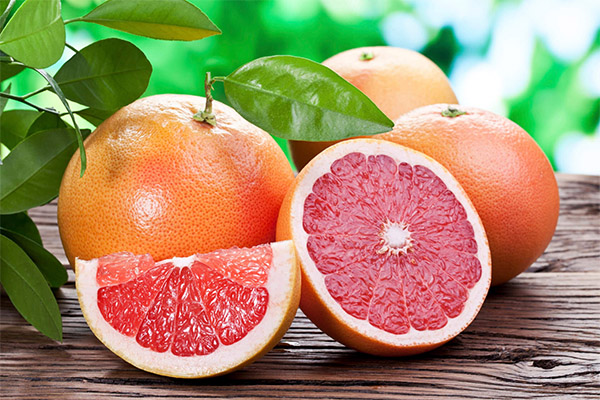
In Diabetes Mellitus.
In Israel, studies have been conducted that proved that grapefruit is an important therapeutic agent for type 2 diabetes. And useful as fresh fruit, and drink from crushed dried peels (1 teaspoon per glass of boiling water). The bitter glycoside naringenin has antioxidant properties and at the same time increases insulin sensitivity.
Important: The glycemic index of grapefruit is 25 units.
For pancreatitis.
This fruit is contraindicated in both acute and chronic pancreatitis. It can not be consumed either fresh or as drinks and desserts. But the powder from its zest can relieve pain when added to food in small quantities.
For gastritis
Since grapefruit contains substances that increase the production of gastric juice, it is prohibited in gastritis in the same way as in pancreatitis. The only exception is the powder from the zest.
For the intestines
Grapefruit is forbidden for peptic ulcers, because the substances in its composition irritate the mucous membranes.
For constipation
Grapefruit is considered a good remedy for constipation. The easiest option is to drink a glass of grapefruit juice before a meal, but not on an empty stomach. It is also useful to add the fruit to salads to improve digestion.
For gout
Grapefruit contains practically no purines, so at gout you can and even need to eat it, because it will help relieve the pain. There are also studies that suggest that the high content of vitamin C allows the fruit to be used to prevent disease.
For the liver
For liver disease, grapefruit is included in the diet with caution. At the same time, there are studies that prove that with hepatitis C, the use of grapefruit helps speed up recovery just because of the flavonoids and bitter glycoside, which do not allow the virus to spread.
In hemorrhoids
In hemorrhoids, consuming grapefruit, which is rich in fiber, can eliminate the very cause of the disease. Also, this fruit helps strengthen the walls of blood vessels, which will reduce the risk of bleeding.
For cholecystitis.
In the treatment of this disease, grapefruit has no independent value, but it can be included in the diet to improve overall health.
Recipes of folk medicine based on grapefruit
Grapefruit is the basis for a variety of remedies in folk medicine:
Compresses for venous insufficiency
After a warm shower to the skin of the feet put thin slices of grapefruit right with the skin and pulp. Cover the top of the compress with parchment paper or plastic wrap, fix it with an elastic bandage and leave it for 30 minutes. The compress will help to relieve swelling, strengthen blood vessels and prevent the development of varicose veins.
Grapefruit bath for colds
In the presence of a high temperature, this procedure is not recommended. But if a person is afraid that after hypothermia can pick up a virus, this is the best therapeutic and preventive remedy. For the bath you need to take 5 red grapefruit right with the skin, cut into circles, pour hot water and insist for 2-3 hours. Then squeeze the juice of these grapefruits through gauze and pour into the bath together with the water in which they were infused. Wrap the rest of the grapefruit in gauze and also immerse it in water. The phytoncides and essential oils in the fruit will help prevent illness.
For Gums
From bleeding gums will help massage, performed with a piece of grapefruit (so that it has both pulp and skin). The duration of the procedure is 10-15 minutes.
With sore throat
It is enough to dissolve 3 drops of the extract or 5 drops of the oil in 100 ml of warm water to get an effective throat gargle.
For maxillary sinusitis
In the treatment of maxillary sinusitis it is recommended to use 1 drop of the extract in 30 ml of water for nasal drops.
For Tired Eyes
This remedy helps well when working at the computer (as well as those whose work involves concentrating on small details). At the workplace, you should leave a saucer with finely chopped grapefruit. The essential oils it contains relieve fatigue and promote concentration.
For calluses
To do this, you need to put a piece of grapefruit pulp with the skin to the problem area and fix it with a bandage overnight. Organic acids help to soften the callus, and later it can be painlessly removed. The duration of the treatment course will be a week.
Dried and ground into a powder of grapefruit zest is recommended to take for stomach pain, adding it to the food a little at a time. It is also done to strengthen the walls of the blood vessels. In addition, grapefruit oil is considered a good general tonic and anti-inflammatory. Grapefruit juice wipe the skin to relieve itching after an insect bite.
Grapefruit in cosmetology
The grapefruit is the most widely used fruit in cosmetology. The juice of this fruit, mixed with vegetable oil, wipe dry skin on the elbows and knees to relieve peeling. It is also used to whiten nail plates. It is also used as a remedy to remove age spots, treat problematic and oily skin.
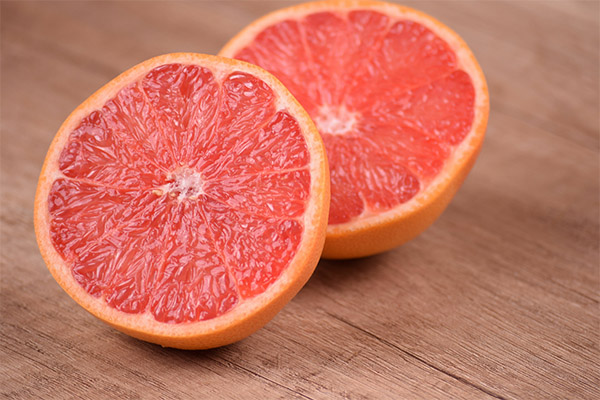
For face
Grapefruit can be used as follows:
- Split into slices, peel off the foil, freeze in the freezer and use for facial massage instead of cosmetic ice.
- Mix 2 tablespoons of grapefruit pulp with 1 tablespoon of rice flour and the same amount of sour cream. Apply to the face for 20 minutes, then rinse off with warm water. The mask has a rejuvenating effect, and at the same time it whitens the skin.
- Mix grapefruit juice in equal proportions with fat sour cream and carrot juice, then add the starch to obtain a thicker consistency. Apply the product for 20-25 minutes and then rinse off. It turns out an excellent nourishing mask.
You can also wipe your face with grapefruit juice to prevent acne.
For Hair
To treat damaged hair, take half a cup of grapefruit juice, add 2 tablespoons of baking soda and 3-4 drops of sage essential oil. Apply the mask according to the general rules - on the scalp, massaging lightly, for 20 minutes. Be sure to cover the head with plastic wrap and wrap it with a towel. Wash off with shampoo.
Also use essential oil. If you add 2-3 drops of oil to 1 tablespoon of shampoo, you get an excellent nutrient that prevents seborrhea.
Health Hazards and Contraindications
Grapefruit and grapefruit juice are contraindicated if the stomach is acidic. Also, this fruit should not be consumed if you are allergic to citrus fruits.
You should also keep in mind that grapefruit contains the substance furanocoumarin. It can both enhance and neutralize the effects of pharmaceuticals. That is why grapefruit and its juice are contraindicated while taking antibiotics, some drugs to treat cardiovascular diseases, as well as statins, whose action is aimed at reducing cholesterol levels and normalizing lipid metabolism.
Grapefruit is contraindicated for people who are taking analgesics, antidepressants, drugs to reduce blood pressure, hormonal oral contraceptives and drugs used for the treatment of malignant tumors. For the same reason, these drugs should not be washed down with grapefruit juice. In any case, before including this fruit in your diet, people who permanently take any pills, it is worth to consult a doctor.
What you can not eat grapefruit
There are a number of restrictions, with what exactly can not eat grapefruit at the same time. This applies mainly to those foods that are high in carbohydrates and starches as well as proteins. In addition to potatoes and bananas, this also includes almost all legumes, as well as dates, meat and fish. The fact is that proteins, proteins and starches when eaten simultaneously with grapefruit can cause stomach discomfort.
Therefore, it is recommended to eat grapefruit half an hour before a meal, then it will be beneficial.
How to choose and store the grapefruit
You should choose only whole fruit without damage. Before buying, it is recommended to weigh the fruit in your hand - the more juice it has, the heavier it is.
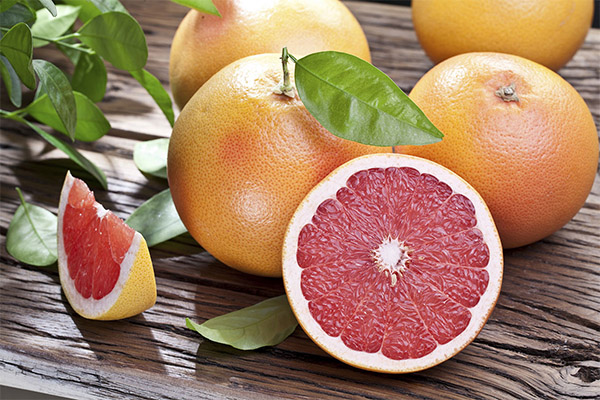
The taste of the grapefruit is influenced by the amount of beta-carotene that it contains. The more of it, the tastier and sweeter the fruit. But beta-carotene is also a pigment. Red grapefruits have more of it, so they taste better than white ones. At the same time, there are green and brown varieties that also taste good. You can tell how ripe a grapefruit is by its smell. The stronger it is, the sweeter the fruit.
The most delicious red varieties are Flame, Rio Red, and Ruby. They were all bred in America in the 1950s. The red varieties are also considered to be healthier because they contain a lot of lycopene, and this substance is quite a powerful antioxidant. However, there are delicious white grapefruits, their flesh has a yellowish hue. Sometimes they are confused with switi, but it is a hybrid of pomelo and grapefruit (it is also known as oroblanco). There are also quite tasty hybrids of grapefruit and tangerine. They are called tangelo and miniola.
Fresh grapefruits should not be stored long. The maximum storage time in the home refrigerator is 10 days. Even if the fruit is not technically spoiled, it will taste much worse than fresh. In the refrigerator, it is recommended to keep them on the bottom shelf or in a basket designed for fruit.
What is the right way to eat grapefruit
Grapefruit is a very useful product, but only if you consume it correctly. The features of including this fruit in the diet will be discussed below.
How much you can eat per day
It would seem that with so many vitamins contained in the grapefruit, there can only be one principle: the more - the better. But in fact, this is not quite true, and excessive fondness for this fruit can lead to very unpleasant consequences. They are related to the fact that the fruit contains quite a lot of aggressive fruit acids. And this means that when consumed in excess, they will have a negative impact on the mucous membrane of the stomach. In addition, in large quantities, these acids have a devastating effect on the oral cavity in general and the teeth in particular. If there are any wounds in the mouth, the acids will irritate them and aggravate the condition. In this case, the tooth enamel will be destroyed by acids and the sensitivity of the teeth will increase. Basically, if you give up grapefruit at this stage, after some time the enamel of healthy teeth will recover. But if the enamel of teeth that were already affected by decay has begun to deteriorate, their condition will only worsen.
In order to benefit from grapefruit without any negative consequences, you should eat no more than one medium-sized fruit per day. This is twice the daily requirement of vitamin C, so a whole grapefruit is already a vitamin bomb. However, the whole fruit should not be eaten in one meal and should be divided into two portions, so that between them there are at least six hours to level out the effects of acids.
If you still experience mild discomfort when eating grapefruit, it can be eaten with other non-starchy fruits in the form of a salad.
Can I Eat Grapefruit at Night and on an empty stomach?
Doctors are still divided on how and when to eat grapefruit. Given that these fruits contain a lot of vitamin C, which has a tonic effect, it would be logical to assume that the fruit should be eaten on an empty stomach or at least just in the morning hours. The substances in these fruits stimulate the appetite, and going to bed on an empty stomach is very difficult. Not to mention the fact that some people simply may not have the patience, and they are sure to make a nightly raid to the fridge to "soak the worm".
At the same time, grapefruit activates the metabolic processes, and in sleep the lipid metabolism proceeds faster. For those who sit on a diet, it is very important. So doctors advise choosing a time based on individual tolerance.
How to peel and slice a grapefruit
With a grapefruit, it is imperative to remove not only the skin, but also the film. All citrus fruits have one, but oranges and tangerines just stay tasteless, while grapefruit has a bitter taste. This is because grapefruit film contains a certain glycoside and quinic acid. In theory, these substances can even be useful, but in this case they give the fruit an unpleasant bitterness, so you need to get rid of them.

So, the fruit should be washed under running water. This should be done very carefully, but thoroughly. Since the peel is treated with wax compounds, you should try to brush them off as well.
You can get rid of the peels in two ways. In the simplest version - you need to cut the fruit in half (across), and then get to the pulp with a teaspoon. It allows you to separate the pulp and from the membranes. It is best to use special spoons with teeth.
It happens that the flesh of the grapefruit is then used to prepare various dishes. In this case it is better to cut the fruit into slices. They are quite large and can easily be peeled from the membranes. And then you can either add them whole or chop them up.
Can I eat the peel?
In theory, grapefruit rinds can be eaten. The problem is something else. In almost all grapefruit-growing regions, growers try to protect the trees from diseases and pests. To do this, they are treated with a variety of chemicals. Unfortunately, most of these compounds remain in the rind and accumulate there. In addition, for better preservation of the fruit during transportation they are covered with special wax compositions - this explains their attractive appearance. It is very difficult to clean the peel from this agent. That being said, it is better not to eat grapefruit peels.
Can I eat grapefruit after a workout?
As you know, only 20% of the weight lost is the result of training. The rest depends on how one eats before and immediately after exercise. Grapefruit is one of the few foods that can be consumed immediately after a workout. It contains enough carbohydrates to replenish energy reserves, but at the same time there are not so many to deposit on the waist.
What you can make with grapefruit: recipes
Grapefruit is used to make a variety of dishes, including salads, desserts, marmalade and jellies. There are many recipes where slices of this fruit are turned into a garnish to meat or fish, but, as mentioned above, it is better not to tempt fate and do not combine grapefruit with such proteins. The only exception is the combination with seafood like mussels and shrimp. In this case, there is no discomfort in the stomach or intestines, but there is a high probability of allergies, so first you need to make sure that the grapefruit does not cause such a reaction.
Juice
It is best to juice with a hand juicer from fresh grapefruit. In this case, one 500 g fruit will yield 230-250 ml of juice and about 50 g of pulp. But this will be quite enough, since the juice is not stored for a long time anyway.
Salad
Grapefruit can be a component of many salads. It pairs well not only with shrimp and other seafood, but also with different kinds of cheese, with avocado (balancing its oily texture), with other citrus fruits and with apples. For salads, it is recommended to cut the grapefruit into slices (popularly called "fillets") and peel them with a sharp knife. By the way, this procedure will be easier with a cold fruit.
For example, you can prepare the following salad - for 2 medium-sized red grapefruit take 200 g of tomatoes, 200 g of any soft cheese, 50 g of olives, 1 tsp. chopped oregano herbs (or oregano), 3 tablespoons of olive oil. Peel the grapefruit from the skin and membranes, take into slices. Cut the tomatoes into circles and crumble the cheese into small cubes. Place tomato slices and grapefruit slices on the plate, alternating them. Sprinkle crumbled cheese and olives on top, pour the sauce on the basis of oil, oregano and grapefruit juice. This salad would go well with boiled shrimp or grilled seafood.
For most salads, we recommend mixing a dressing of vegetable oil with the addition of fresh grapefruit juice, which is formed when the fruit is split into slices. If desired, a little pepper or honey can be added to the dressing. Also, some chefs lightly marinate the peeled grapefruit for a short period of time.
Smoothie
To prepare the drink you will need 1 medium red grapefruit, 3 small tangerines, 3 apricots, 10-12 strawberries and 0.5 liters of water. The resulting amount is enough for two servings.
Squeeze the juice from the grapefruit and whip in a blender with the strawberries. The resulting mixture should be poured into a separate container. Whip the apricots and mandarins until smooth, then dilute with boiling water and whip again. Decant the orange mandarin and apricot mixture into glasses, and top with the grapefruit and strawberry mixture to make a two-phase drink. If desired, add ice.
Jam
This dessert is one of the easiest ways to extend the shelf life of grapefruit a bit. There are several popular recipes. One of them is as follows: for 4-5 medium-sized red grapefruits (that's about 600-700 g) you need to take one lemon, 350 g of sugar (one and a half cups) and a pinch of cinnamon powder.
The citrus fruits should be thoroughly washed, peeled of the crust, remove the pulp from them without veins and film, so that the jam is not bitter, throw out also the pips. Theoretically, if the zest is thoroughly washed, it can be added in small quantities to the jam to enhance the flavor.
Put the pulp and zest in a saucepan, there pour the juice, which is formed when peeling and slicing grapefruit. Add the juice of the lemon and, if desired, its pulp. Then put it all on the stove and bring it to the boil, stirring from time to time, so that the jam does not burn. When the mass comes to a boil, leave it on low heat for another hour and a half, until its volume in the pot is reduced by half. After this at the very end of the cooking process add cinnamon.
Compote
For 2 liters of compote you'll need 3-4 medium red grapefruit, a few sprigs of fresh mint, 150 grams of sugar (preferably cane). The algorithm is simple:
- First syrup - pour sugar into a pot, pour water, stir and bring to a boil.
- Then add stripped grapefruit slices, cook for 10-15 minutes, throw mint leaves and leave to cool.
- In an hour, pour the cooled compote into a clear carafe and throw in a few grapefruit or orange slices for decoration.
In summer, this drink is served with ice. It is wonderfully refreshing even in the intense heat.
Can I Give Grapefruit to Animals
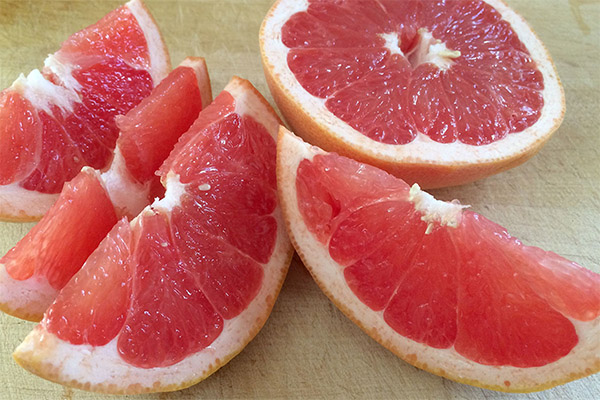
Grapefruits in the form of dried fibers or extracts are included in many pet foods. However, along with other citrus fruits, they can be given to the animal and in fresh form. It is recommended to do this in the winter and fall, when the pet is in particular need of vitamins. A single serving of grapefruit should be no more than 2-3 slices, unless the pet has a negative reaction. If more is given, the animal may react to that volume with vomiting or diarrhea.
Interesting facts about grapefruit
Citrus fruits are familiar to mankind since ancient times. But grapefruit was discovered relatively recently - in 1750. The discovery belonged to priest Griffiths Hughes, who was fond of botany. He gave the fruit the name "forbidden fruit". But later in Britain it became known as the little shaddock, because its resemblance to the pomelo was obvious. The fact is that the pomelo came to Europe via England and was imported from the island of Barbados by a certain Captain Shaddock.
The name "grapefruit" did not appear until 200 years ago. It was first cultivated in Jamaica. But today the leaders in its production are the United States, South Africa, Brazil and Israel.
«Important: All information on this site is provided for informational purposes only for informational purposes only. Before applying any recommendations, consult a health care professional. specialist. Neither the editors nor the authors shall be liable for any possible harm caused by materials."


